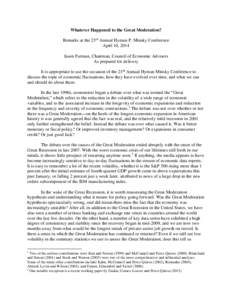 Date: 2014-08-27 15:28:44Recessions Welfare economics Great Moderation Mathematical finance Real business cycle theory Gross domestic product Economic growth Volatility Inflation Macroeconomics Economics Business cycle | |  Whatever Happened to the Great Moderation? Remarks at the 23rd Annual Hyman P. Minsky Conference April 10, 2014 Jason Furman, Chairman, Council of Economic Advisers As prepared for delivery It is appropriate to use the o Whatever Happened to the Great Moderation? Remarks at the 23rd Annual Hyman P. Minsky Conference April 10, 2014 Jason Furman, Chairman, Council of Economic Advisers As prepared for delivery It is appropriate to use the o
Add to Reading ListSource URL: delong.typepad.comDownload Document from Source Website File Size: 799,15 KBShare Document on Facebook
|


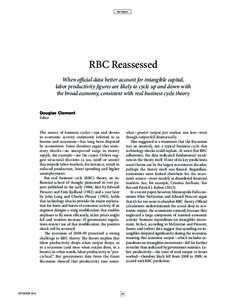
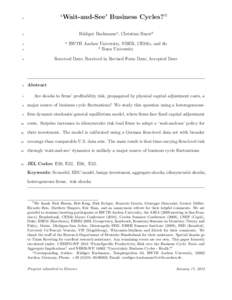
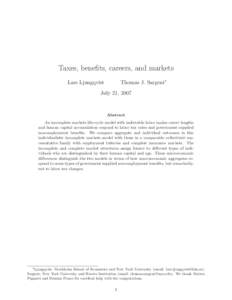
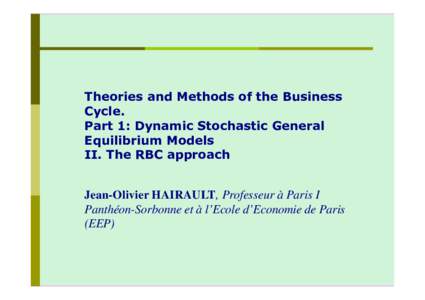
 Whatever Happened to the Great Moderation? Remarks at the 23rd Annual Hyman P. Minsky Conference April 10, 2014 Jason Furman, Chairman, Council of Economic Advisers As prepared for delivery It is appropriate to use the o
Whatever Happened to the Great Moderation? Remarks at the 23rd Annual Hyman P. Minsky Conference April 10, 2014 Jason Furman, Chairman, Council of Economic Advisers As prepared for delivery It is appropriate to use the o